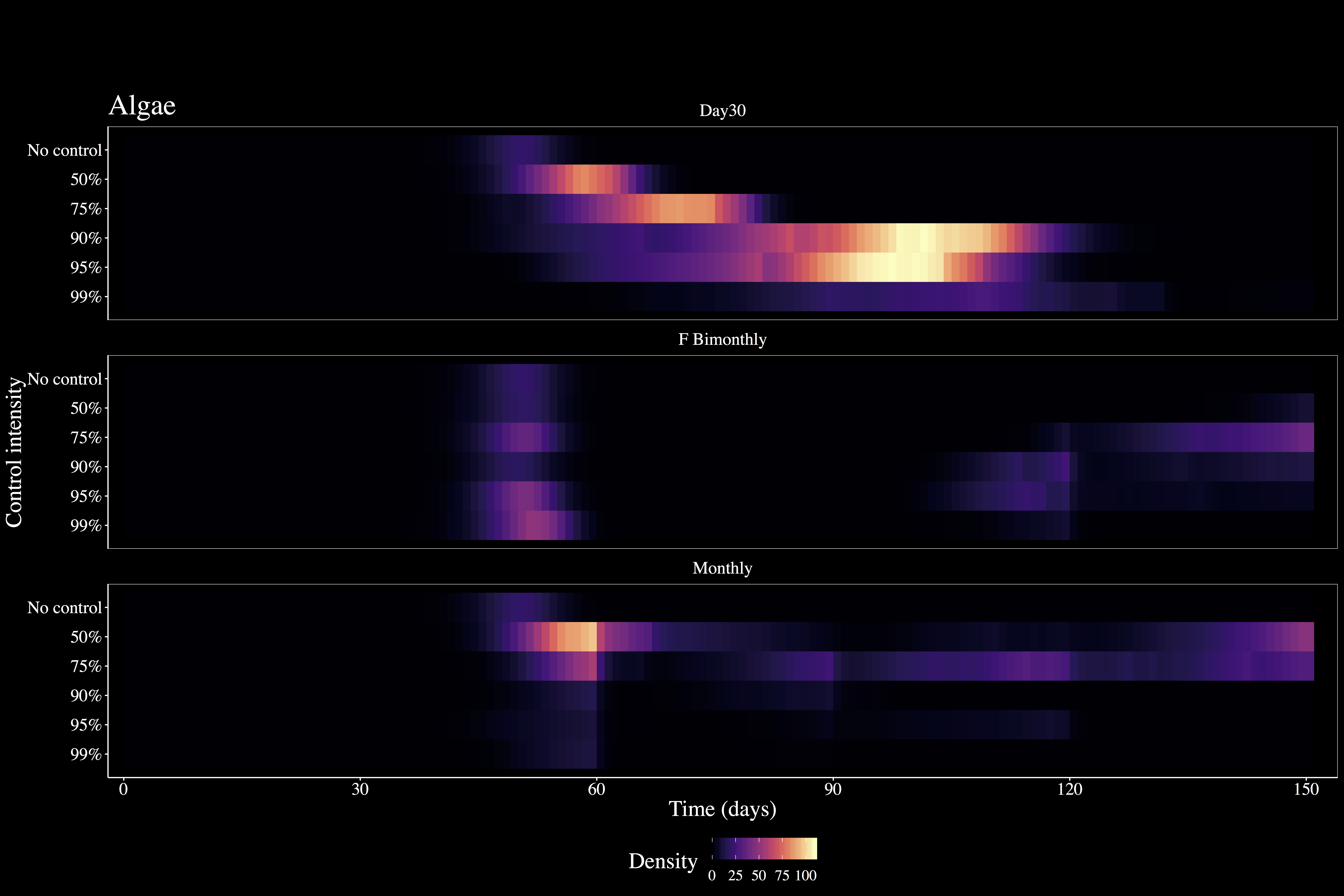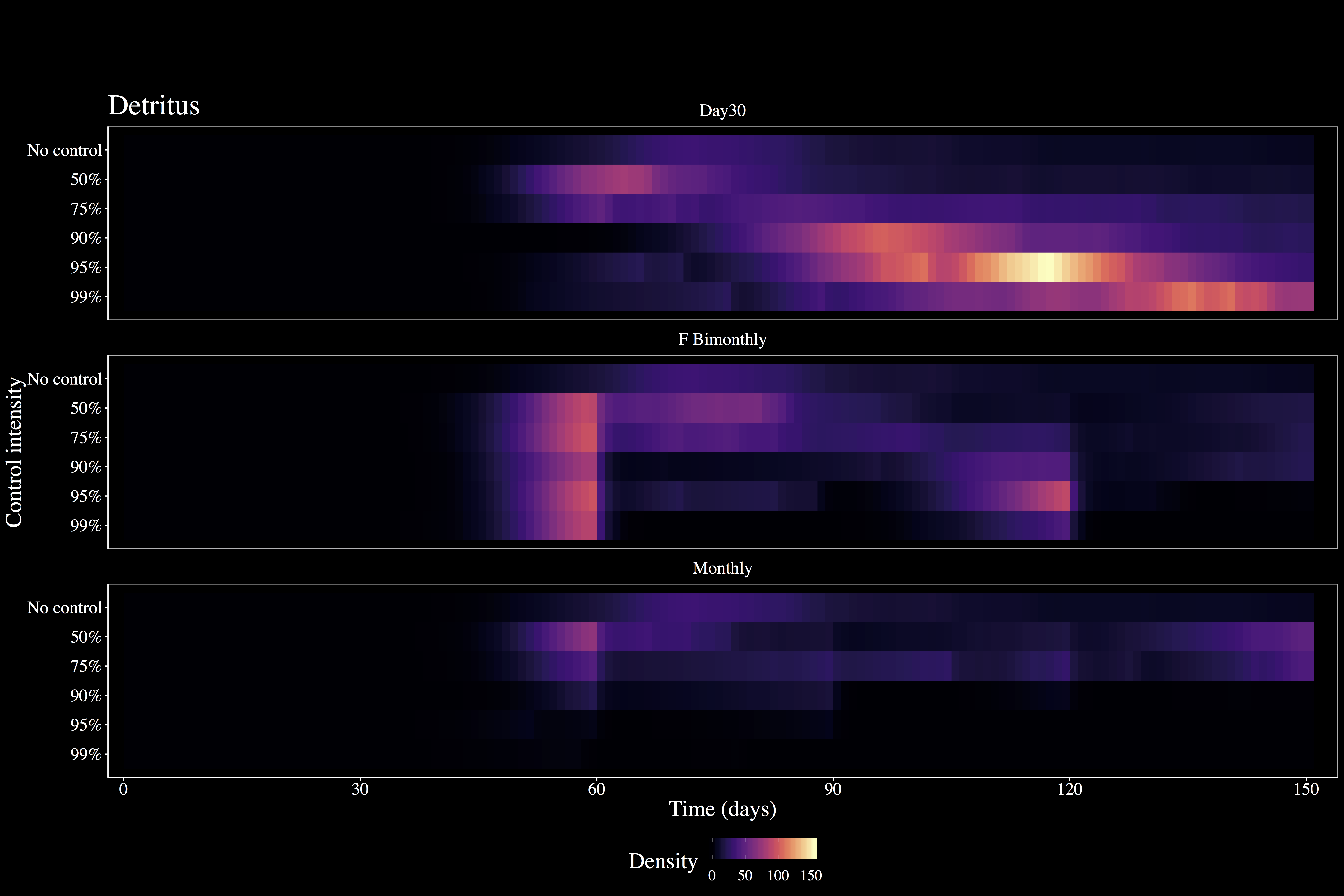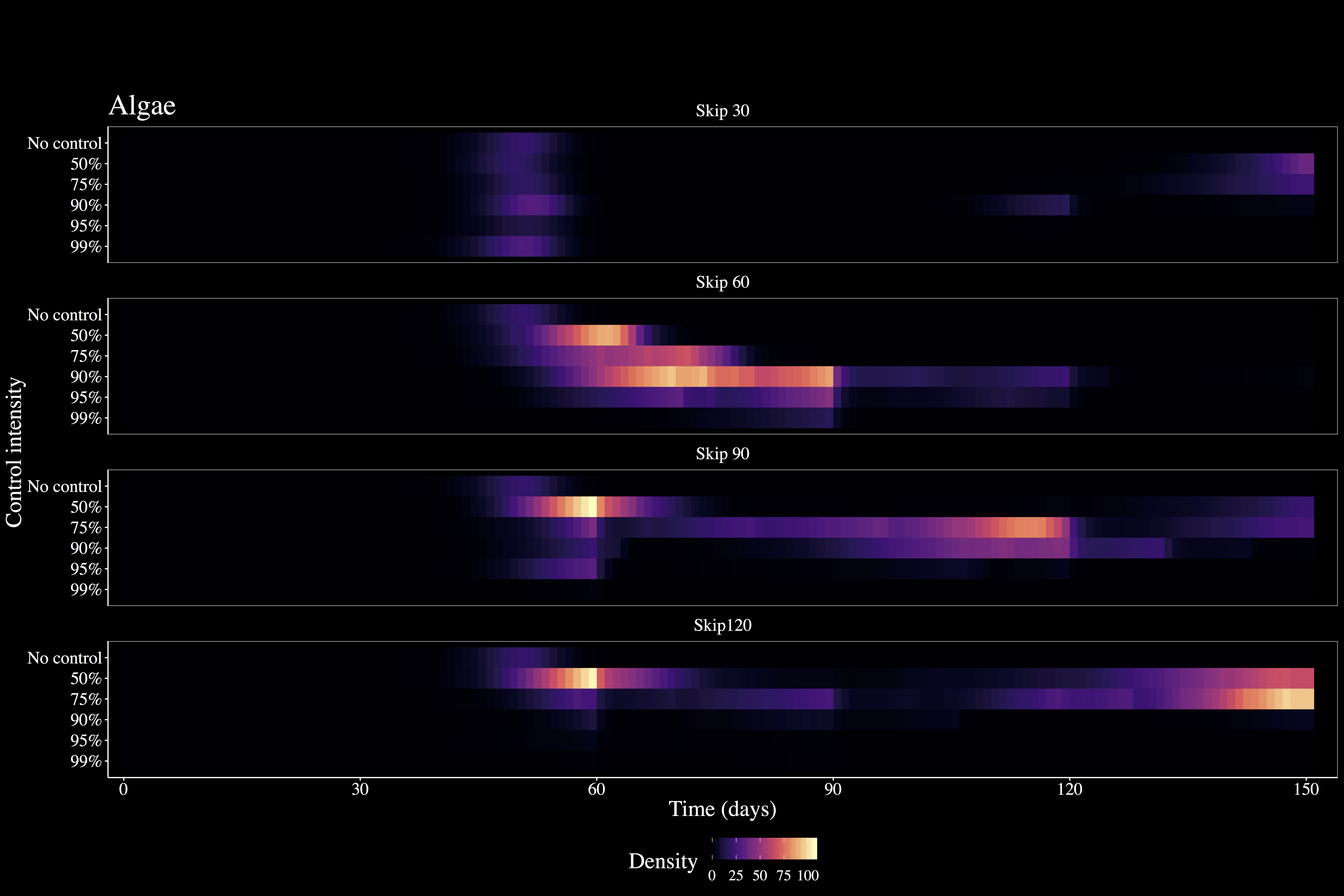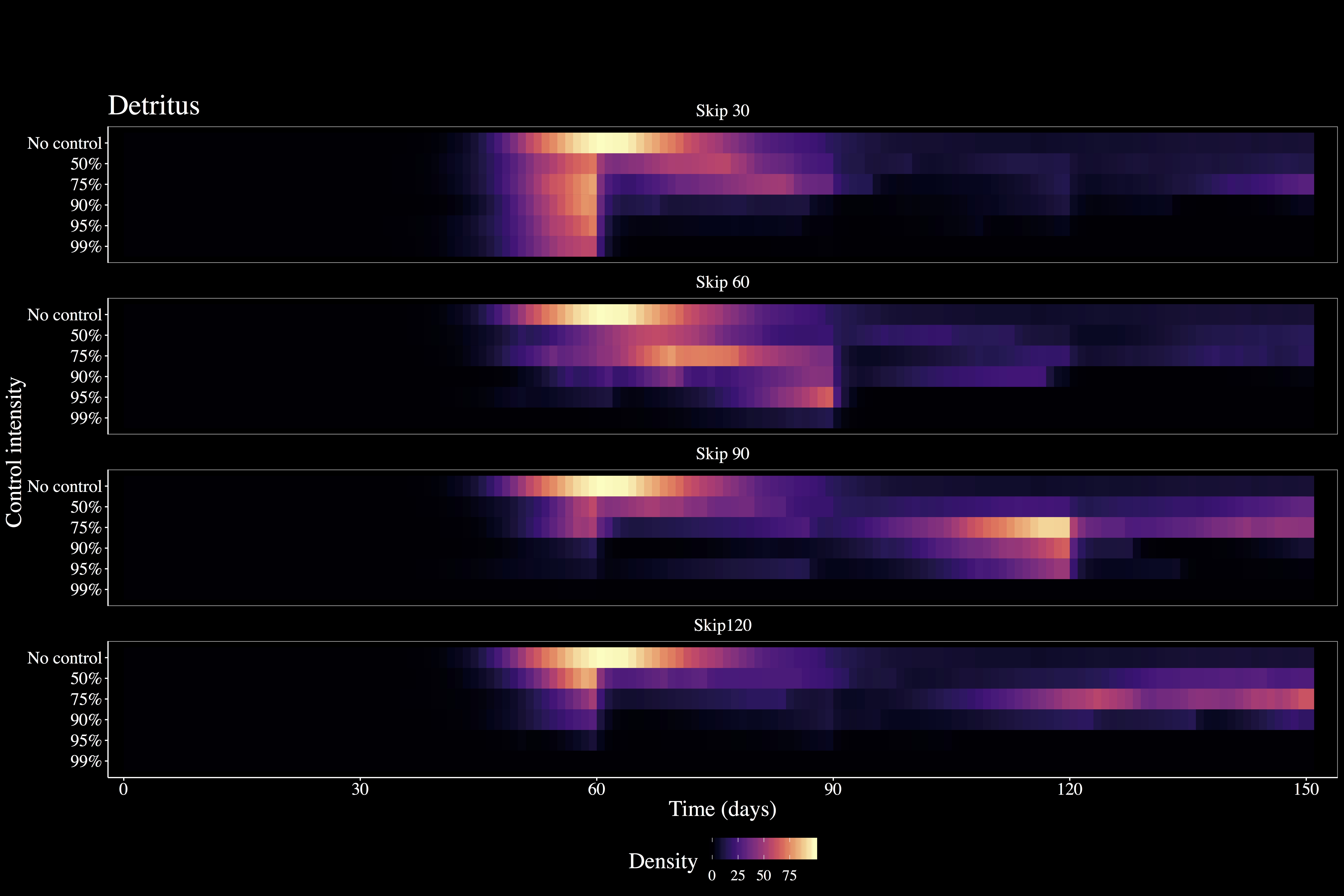Disease

Forecasting human exposure risk from bioenergetics simulation models of host-parasite ecology in the human schistosome
Location
Emory University
Atlanta, USA
People
Matt Malishev, Emory University, USA
David Civitello, Emory University, USA
Tasks
- Integrate lab data on host-parasite infection in the Biomphalara glabrata and Schistosoma mansoni system to build a population transmission model to forecast human exposure risk.
- Simulate the consequences of applying chemical control strategies (molluscicides) that vary in frequency and intensity for mediating human-infectious parasite output throughout the transmission season.
Outcomes
-
Malishev M & Civitello DJ (2019) Linking bioenergetics and parasite transmission models suggests mismatch between snail host density and production of human schistosomes. Integrative and Comparative Biology, iz385, https://doi.org/10.1093/icb/icz058.
-
Malishev M & Civitello DJ. Modelling how resource competition among snail hosts affects the mollusciciding frequency and intensity needed to control human schistosomes. In review.
-
Malishev M and Civitello DJ (2019) Fewer, fatter snail hosts make more human schistosome parasites than many, starved ones, International Society for Ecological Modelling 2019, ISEM2019, Oct 1–5, Salzburg, Austria.
Example outputs

Figure 1. Cumulative human-infectious parasite output (# 500 L–1 ± SE) for A) logistically growing periphyton algae and B) constant detritus subsidy after the seven simulated chemotherapy programs (n = 5) for schistosomiasis control at 95% host mortality (hb = 3.0 d–1) showing potential program success (left of dashed line, in blue) and failure (right of dashed line, in red): no control, one-off control every tenth day (day 10–140), monthly, bimonthly (every two months), skipping day 30, skipping day 60, skipping day 90, and skipping day 120. Resource growth rates are r = 0.25 d-1 and det = 0.25 mg C d-1 for algae and detritus, respectively. Ref: Malishev & Civitello. In review.


Figure 2. Human-infectious parasite output (# 500 L–1) for A) logistically growing periphyton algae and B) constant detritus subsidy over the 150-day transmission season for no control, 50%, 75%, 90%, 95%, and 99% host mortality (implemented as an event-based change in the baseline mortality hazard rate, hb = 0.69, 1.39, 2.3, 3.0, and 4.6 d–1, respectively) from chemotherapy after control on day 30 only, bimonthly (every two months, day 60 and day 120), and monthly (WHO recommendation). Lighter color areas represent higher parasite densities. Early chemotherapy (day 30 only) results in severe rebounds late season unless host mortality is 99%. Compared to scenarios with algae, detritus scenarios with no control produces extended parasite outputs and thus shows prolonged, exaggerated rebounds late in the season after a ‘risky’ chemotherapy event (< 99% intensity and for early and intense chemotherapy, i.e. day 30 only). Similarly, bimonthly generates bimodal peaks from prolonged parasite output. Resource growth rates are r = 0.25 d-1 and det = 0.25 mg C d-1 for algae and detritus, respectively. Ref: Malishev & Civitello. In review.


Figure 3. Human-infectious parasite output (# 500 L–1) for A) logistically growing periphyton algae and B) constant detritus subsidy over a 150-day transmission season for no control, 50%, 75%, 90%, 95%, and 99% host mortality (hb = 0.69, 1.39, 2.3, 3.0, and 4.6 d–1, respectively) from chemotherapy after control when skipping day 30, day 60, day 90, and day 120. Lighter color areas represent higher parasite densities. Weaker control performs worse by stimulating parasite rebounds following the skipped chemotherapy event. Skipping the first month (day 30) acts similarly to monthly control, while skipping day 60 fails to suppress the primary parasite peak normally seen under no control conditions. Detritus scenarios show characteristic prolonged parasite resurgence that is particularly evident when skipping the first month (day 30) irrespective of control intensity. Resource growth rates are r = 0.25 d-1 and det = 0.25 mg C d-1 for algae and detritus, respectively. Ref: Malishev & Civitello. In review.
Links
Supplementary Material for Malishev M & Civitello DJ (2019) Int. Comparat. Biol., iz385.
| Back to top | Home page |